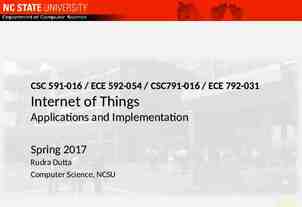MSHA Machine Guarding
37 Slides252.50 KB
MSHA Machine Guarding
Introduction to Guarding Many accidents result from persons working on or around moving machinery. These accidents could have been prevented by the installation and proper maintenance of guarding. The goal of this training is to make the guarding of all equipment as easily understood as possible and re-enforce the safe working procedures that must always be in place around dangerous equipment.
MSHA Regulations 56/57.14107(a) Moving machine parts shall be guarded to protect persons from contacting gears, sprockets, chains, drive, head, tail and take-up pulleys, flywheels, couplings, shafts, fan blades, and similar moving parts that can cause injury. 56/57.14107(b) Guards shall not be required where the exposed moving parts are at least seven feet away from walking or working surfaces.
Accidents and Injuries For the period 1990-1997: there were 3,300 lost time injuries involving conveyor belts 39 miners were killed working around an unguarded conveyor belt 170 miners were permanently disabled as the result of working around an unguarded conveyor belt
Effective Guarding An effective guard should have several characteristics in design and construction: Be considered a permanent part of the equipment Afford maximum protection to operator Prevent access to danger zone during operation Be convenient and not interfere with efficiency of the operation Be designed for each specific machine Be durable and constructed strong enough to resist normal wear Not present a hazard in itself
Maintenance When the installation of guards is complete, the employees who will work around the equipment or maintain it during operation should be properly trained to replace guards immediately after they are removed. Removal of guards should only take place after the equipment is properly de-energized and locked out. Supervisors, maintenance personnel, oilers, and all laborers working in the immediate area must be aware of the hazards around such equipment.
Guard Selection The selection of a guarding method to be used may depend upon a number of factors such as: space limitations, production methods, size of available stock, frequency of use, and type of equipment. Moving machine parts, nip points, and pinch points must be guarded individually rather that restricting access to the areas by installation of a railing. Guards should never create a greater hazard to employees working with or near the equipment.
Type of Guards Materials for guards should be carefully selected. In most cases, guards of bar stock, sheet metal, perforated metal, expanded metal, or heavy wire mesh are more effective than other materials. Larger guards are frequently made of pipe or of a structural steel frame supporting wood, solid sheet metal, or wire mesh that will provide a positive barrier against moving parts.
Type of Guards Guards of wood have limited application because their durability and strength, high replace cost and flammability may pose greater risk to employees who must work on or around equipment with this type of material construction. Guardrails and toeboards are frequently installed around flywheels, hoisting and other equipment where a hazards from falling objects exist, provide additional safeguards around moving parts and machinery.
Type of Guards The application of guards constructed using expanded metal or mesh has several advantages over other materials. The area guarded can be inspected without removing the guard. Grease fittings and oil cups can be placed through openings without cutting large holes in the guard. Smaller particles of spilled materials (fines) can pass through the guard with minimal build-up of materials.
Self Cleaning Tail Pulley The example on the right shows a selfcleaning tail pulley with an inadequate guard. The guards are placed too far away from the fins and pulley, leaving pinch points exposed to the operator.
Self Cleaning Tail Pulley Self-cleaning tail pulleys should be guarded in this manner so that the employee is protected from the pinch points of the equipment and those created by the transfer chute.
Tail Pulley Guards The guard for the tail pulley shown here does not cover the rotating parts. Side guards are effective when placed close to the pulley and extend a sufficient distance so that pinch points cannot be reached from the front, top or back.
Working on Energized Equipment Remote areas, guarded by location, usually do not need to be guarded. However, if work is performed at such a location the equipment must be de-energized, locked locked and employees provided with a safe means of access.
Return Idlers Return idlers should be guarded where someone could be injured while working or passing underneath the belt. It is important to guard these areas when clearance is less than seven feet from the walking surface.
Return Idlers Here are two acceptable methods of guarding return idlers so that grease fittings can be accessed without removing the guards. The mesh openings can be large enough to let fines fall through but not allow a person to reach through.
Head Pulleys Unguarded and guarded head pulley and drive unit
Stop Cords Stop cords provide additional safeguards for employees. The cord must be located so it can be reached by anyone falling on or against the belt. It must be sufficiently taut to assure the drive motor will be de-energized when the stop cord is pulled.
Conveyor Railings The installation of a railing may be provided in lieu of conveyor guarding. The railing must be placed above belt level to prevent contact with the moving belt. When cable is used, it must be kept tight and free of burrs.
Take-up Pulleys Unguarded and guarded take-up pulley
Applying Belt Dressings MSHA regulations state that belt dressing shall not be applied manually while the belts are in motion, unless an aerosol-type dressing is used. Mesh guarding allows access without exposing the operator.
Counterweights Pinch points of take-up pulleys may be located above the ground so as to be guarded by location, however counterweights must be guarded to prevent access or blocked with a bar to prevent the counterweight from dropping to the ground.
Drive Shafts Drive shafts with protruding set screws, keys and key ways must be guarded to prevent persons from the hazard created by rotating parts.
Power Take-off Shafts Portable crushing machinery may have a power take-off shaft that can be best guarded by enclosing the shaft with a guard that is constructed of two halves, totally enclosing the drive shaft.
Drive Couplings Drive couplings should be totally enclosed as shown in the illustration on the right.
Drive Belt & Pulleys The standard guard for a drive belt is inadequate because it allows an employee to reach behind the guard and access the rotating parts during maintenance operations.
Drive Belt & Pulleys Where access is possible, the belts and pulleys should be totally enclosed, preventing accidental contact with moving machine parts.
Belt Breakage Unguarded and guarded drive belt and pulley
Protruding Shafts An effective way of guarding a protruding shaft is to put a sleeve with an end cap. Shafts ends, other than keyed shafts must be guarded when they protrude further than half the distance of the diameter of the shaft.
Fan Inlets Fan inlets should be guarded regardless of location to not only prevent contact with moving blades but to also prevent free flying blades to injury an employee.
Flywheel Guards A flywheel may be considered guarded by location where it is located at least seven feet above the walking or working surface.
Flywheel Guards Where a build-up of material changes the distance of the walking or working surface, a guard must be installed to prevent contact by employees.
Classifiers Since it is not practical to guard each classifier, a railing can be installed to restrict access and prevent employees from falling into a hazard.
Dryers Unguarded and guarded trunnions on a dryer
Safe Maintenance Don’t manually apply belt dressing if a conveyor belt is in motion. Only pressurized dressings can be put on while a conveyor is running. Always put a guard back in place when you’re done working on a machine. Don’t try to dislodge rocks form pulleys while the conveyor is running. Block conveyors against hazardous motion before repairing or servicing machinery.
Working Smart Examine each work area at the start of each shift for guards that may need to be replaced. Lock and TAG out all power switches before you work on any machinery. Align conveyor belts from a safe location where the belt can’t grab you. Stay clear of suspended loads during installation of repair of a conveyor. Check stop cords periodically to see if they work. Use a safety belt and harness when working from elevated work areas. Keep all walkways free and clean of hazards.
Summary Guarding remains the number one citation issued by the Mine Safety and Health Administration. Historical data proves that working around unguarded equipment and machinery is always more dangerous than working around guarded equipment. Work safe - Guard all machinery










































